Hyundai Bayon VS Skoda Octavia Combi – Specs, Efficiency & Price Comparison
Which model is the better choice – the Hyundai Bayon or the Skoda Octavia Combi? We compare performance (100 HP vs 265 HP), boot capacity (411 L vs 640 L), efficiency (5.40 L vs 4.40 L), and of course, the price (20100 £ vs 24400 £).
Find out now which car fits your needs better!
The Hyundai Bayon (SUV) is powered by a Petrol engine and comes with a Manuel or Automatic transmission. In comparison, the Skoda Octavia Combi (Estate) features a Petrol, Petrol MHEV or Diesel engine and a Manuel or Automatic gearbox.
When it comes to boot capacity, the Hyundai Bayon offers 411 L, while the Skoda Octavia Combi provides 640 L – depending on what matters most to you. If you’re looking for more power, you’ll need to decide whether the 100 HP of the Hyundai Bayon or the 265 HP of the Skoda Octavia Combi suits your needs better.
There are also differences in efficiency: 5.40 L vs 4.40 L. In terms of price, the Hyundai Bayon starts at 20100 £, while the Skoda Octavia Combi is available from 24400 £.
Compare all the key specs now and find out which model fits your lifestyle best!
Hyundai Bayon
The Hyundai Bayon is a compact crossover that effortlessly merges practicality with modern design. Its sleek exterior and spacious interior make it an ideal choice for urban settings and longer journeys alike. With a focus on comfort and connectivity, this vehicle provides a smooth driving experience paired with advanced technology features.
details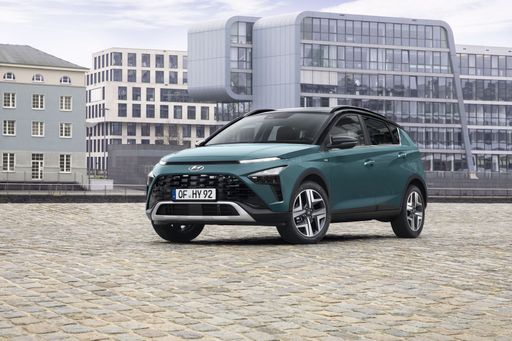 @ hyundai.news
@ hyundai.news
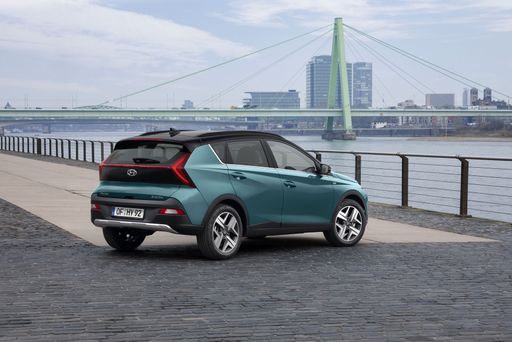 @ hyundai.news
@ hyundai.news
 @ hyundai.news
@ hyundai.news
 @ hyundai.news
@ hyundai.news
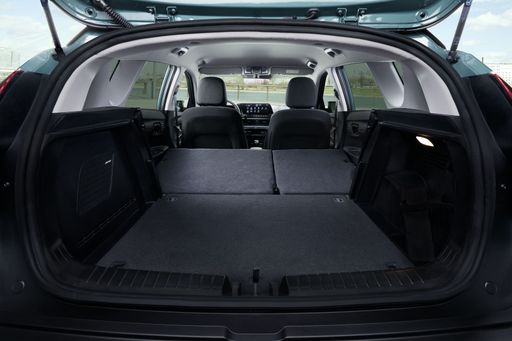 @ hyundai.news
@ hyundai.news
Skoda Octavia Combi
The Skoda Octavia Wagon impresses with its spacious interior, offering ample room for both passengers and luggage. It maintains a sleek and modern design, making it a stylish choice for families and professionals alike. The vehicle boasts an efficient engine range, providing a smooth and responsive driving experience.
details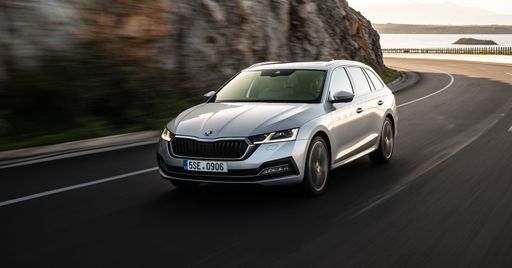 @ skoda-media.de
@ skoda-media.de
 @ skoda-media.de
@ skoda-media.de
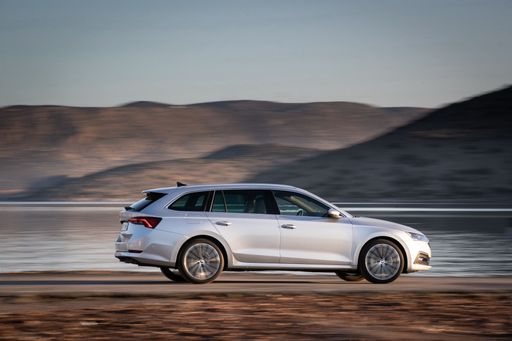 @ skoda-media.de
@ skoda-media.de
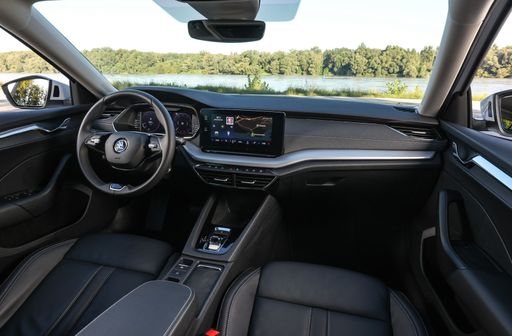 @ skoda-media.de
@ skoda-media.de

|

|
|
|
|
Costs and Consumption |
|
|---|---|
|
Price
20100 - 25800 £
|
Price
24400 - 41600 £
|
|
Consumption L/100km
5.4 - 5.5 L
|
Consumption L/100km
4.4 - 6.9 L
|
|
Consumption kWh/100km
-
|
Consumption kWh/100km
-
|
|
Electric Range
-
|
Electric Range
-
|
|
Battery Capacity
-
|
Battery Capacity
-
|
|
co2
124 g/km
|
co2
114 - 157 g/km
|
|
Fuel tank capacity
40 L
|
Fuel tank capacity
45 - 55 L
|
Dimensions and Body |
|
|---|---|
|
Body Type
SUV
|
Body Type
Estate
|
|
Seats
5
|
Seats
5
|
|
Doors
5
|
Doors
5
|
|
Curb weight
1170 - 1195 kg
|
Curb weight
1366 - 1534 kg
|
|
Trunk capacity
411 L
|
Trunk capacity
640 L
|
|
Length
4180 mm
|
Length
4698 - 4709 mm
|
|
Width
1775 mm
|
Width
1829 mm
|
|
Height
1500 mm
|
Height
1455 - 1468 mm
|
|
Payload
460 - 465 kg
|
Payload
471 - 534 kg
|
Engine and Performance |
|
|---|---|
|
Engine Type
Petrol
|
Engine Type
Petrol, Petrol MHEV, Diesel
|
|
Transmission
Manuel, Automatic
|
Transmission
Manuel, Automatic
|
|
Transmission Detail
Schaltgetriebe, Automat. Schaltgetriebe (Doppelkupplung)
|
Transmission Detail
Schaltgetriebe, Automat. Schaltgetriebe (Doppelkupplung)
|
|
Drive Type
Front-Wheel Drive
|
Drive Type
Front-Wheel Drive, All-Wheel Drive
|
|
Power HP
100 HP
|
Power HP
116 - 265 HP
|
|
Acceleration 0-100km/h
11.3 - 12.4 s
|
Acceleration 0-100km/h
6.5 - 10.7 s
|
|
Max Speed
176 - 179 km/h
|
Max Speed
203 - 250 km/h
|
|
Torque
172 - 200 Nm
|
Torque
220 - 370 Nm
|
|
Number of Cylinders
3
|
Number of Cylinders
4
|
|
Power kW
74 kW
|
Power kW
85 - 195 kW
|
|
Engine capacity
998 cm3
|
Engine capacity
1498 - 1984 cm3
|
General |
|
|---|---|
|
Model Year
2024
|
Model Year
2024 - 2025
|
|
CO2 Efficiency Class
D
|
CO2 Efficiency Class
D, C, E, F
|
|
Brand
Hyundai
|
Brand
Skoda
|
Hyundai Bayon
Introducing the Hyundai Bayon: A New Era in Compact SUVs
The Hyundai Bayon, a compact SUV designed with urban adventurers in mind, is making waves with its exceptional blend of style, performance, and technology. The brand has pulled out all the stops to ensure that the Bayon stands out in the crowded SUV market, offering a vehicle that is both practical and innovative.
Sleek Design and Cutting-Edge Aerodynamics
The Bayon features a striking exterior design, characterised by its bold lines and angular shapes. With a length of 4180 mm, a width of 1775 mm, and a height of 1500 mm, the Bayon commands attention with its modern appeal and aerodynamic efficiency. These dimensions not only contribute to its sleek design but also enhance fuel efficiency, achieving an impressive 5.4 L/100 km.
Engine Performance and Specifications
Under the bonnet, the Bayon is powered by a 1.0-litre T-GDI petrol engine, delivering a robust 100 PS or 74 kW. This engine is available with either a manual or automatic gearbox, meeting varied driver preferences. The front-wheel-drive system complements its urban-centric design, ensuring a smooth and responsive ride.
Maximised Interior Space and Comfort
The spacious interior of the Bayon accommodates up to five passengers comfortably. The vehicle boasts a boot space of 411 litres, perfect for both everyday use and weekend getaways. The cabin is designed with practicality and technology in mind, with intuitive controls and ample storage options.
Advanced Technology and Connectivity
Hyundai has equipped the Bayon with state-of-the-art technology to enhance the driving experience. The SUV features a high-resolution touchscreen, offering seamless connectivity with Apple CarPlay and Android Auto. Safety is also a priority, with multiple driver assistance systems including lane-keeping assist and forward collision avoidance assist.
Environmental Efficiency
Despite its powerful performance, the Bayon achieves a respectable CO2 efficiency class of D, with emissions as low as 122 g/km. This balance between performance and environmental responsibility makes the Bayon an attractive option for conscientious drivers.
Affordability and Market Appeal
The Hyundai Bayon is competitively priced, ranging from €22,900 to €29,600. Its affordable running costs, estimated at 32.3 to 36.4 cents per kilometre, further enhance its appeal to budget-conscious consumers. With monthly costs ranging from €806 to €909, the Bayon provides excellent value without compromising on features or performance.
Final Thoughts
The Hyundai Bayon truly stands out in the compact SUV segment, combining style, innovation, and practicality in an appealing package. It offers a versatile driving experience suited to the demands of modern urban living, making it a top contender in its class. As Hyundai continues to champion forward-thinking design and technology, the Bayon is a testament to the company's ongoing commitment to excellence.
Skoda Octavia Combi
The Versatile Skoda Octavia Wagon: A Comprehensive Insight
The Skoda Octavia Wagon has long served as a benchmark in the estate car segment, blending practicality with a touch of luxury. For the 2024 model year, Skoda has introduced thoughtful enhancements across the board, offering a range of options that meet varying needs and preferences. From innovative features to technical prowess, the Octavia Combi continues to impress car enthusiasts and everyday drivers alike.
Engine and Performance: A Diverse Selection
The Skoda Octavia Combi offers a choice of petrol, mild-hybrid, and diesel engines, ensuring there's something for every kind of driver. The petrol units are equipped with advanced 1.5 TSI ACT engines, delivering outputs ranging from 116 to 150 PS. For those inclined towards diesel, the 2.0 TDI SCR variants provide a smooth and economical drive, with options peaking at 150 PS. Notably, the RS model stands out with a robust 265 PS, bringing a spirited drive with its 6.8 L/100km efficiency.
All models channel power to the front wheels, with transmission options including a precise manual gearbox or a slick automatic with dual-clutch technology. The efficient fuel consumption across the Octavia Combi range, from 4.4 to 6.8 L/100km, further reinforces its appeal as a family-friendly, economical choice.
Innovations and Technological Highlights
Innovation lies at the heart of the new Skoda Octavia Combi. The inclusion of mild-hybrid technology in specific models exemplifies Skoda's commitment to sustainable and efficient driving solutions. This technology not only aids in fuel economy but also enhances the overall driving experience with smoother acceleration and reduced emissions.
Beyond the mechanic, the Octavia Combi is loaded with connectivity and infotainment features to cater to the modern driver. The intuitive infotainment system, equipped with a large touchscreen display, allows seamless access to navigation, entertainment, and vehicle settings, making every journey as comfortable as it is enjoyable.
Practicality and Comfort for Every Journey
Practicality remains a cornerstone for the Skoda Octavia Combi. Its spacious interior comfortably accommodates five passengers, with ample legroom and headroom ensuring a relaxed journey. The model boasts a notable boot space of 640 litres, making it perfect for both daily use and long excursions.
Attention to detail is evident in the choice of materials and the layout of controls, which are designed for both aesthetic appeal and ease of use. Various trim lines, such as Essence and Sportline, allow buyers to tailor the vehicle to their taste, offering a mix of elegance and sportiness.
Final Thoughts: A Reliable Choice with a Touch of Innovation
The 2024 Skoda Octavia Combi promises to be a significant player in the estate car market, worthy of consideration for those seeking a versatile, efficient, and technology-laden vehicle. With a competitive price range between €27,690 and €47,790, it provides excellent value for money. Whether it's the daily commute or a long family vacation, the Skoda Octavia Combi is equipped to handle the demands of modern life with ease and sophistication.
The prices and data displayed are estimates based on German list prices and may vary by country. This information is not legally binding.
